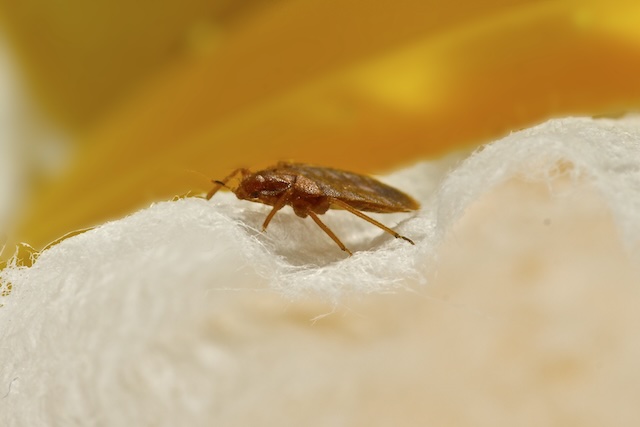To get rid of bed bugs, you have to get rid of both the adults and their eggs, which are usually hidden in places that are hard to find. For effective pest control, you need to know what bed bug eggs look like, where they usually live, and how to deal with them.
Things that bed bug eggs have:
It’s hard to see bed bug eggs with the human eye because they are so small—about 1 mm long. They are white or cream-colored and oval-shaped. They can fit in with many surfaces, like bedding, furniture, and walls, thanks to their small size and light colour.
In her lifetime, a female bed bug can lay hundreds of eggs, which she usually does in groups. The eggs have a sticky covering that helps them stick to objects and stay in place while they are being incubated.
Bed bug eggs often hide in the following places:
Mattress Seams and Tufts: Bed bugs like to lay their eggs close to their hosts, and the seams and tufts of beds are a safe place for them to hide. It keeps the eggs safe and warm with its folds and wrinkles.
Cracks and crevices: Bed bugs are very good at hiding places to lay their eggs. Cracks in furniture, floorboards, and walls can be used by birds to lay their eggs.
Behind Wallpaper: Bed bugs may choose to lay their eggs behind wallpaper, especially if they are near places where people spend a lot of time.
Electrical outlets: These small holes are a good place for bed bugs to lay their eggs without being seen. Bed bugs may come to these places because of the heat that electrical parts give off.
Bedding and Linens: Bed bugs can lay their eggs on bedding, linens, and clothes, especially in places where they can easily get to their hosts.
Furniture Joints: Chairs, sofas, and other pieces of furniture with joints are great places for birds to lay their eggs. The eggs are protected inside these joints, which makes them hard to find.
How to Get Rid of Bed Bug Eggs:
Thorough Cleaning: To get rid of bed bug eggs, you need to clean your home regularly and thoroughly. Both eggs and nymphs can be killed by vacuuming, steam cleaning, and washing bedding at high temperatures.
Use of Insecticides: Insecticides that are made to kill bed bugs can also kill eggs. But it’s important to carefully follow the product’s directions and think about getting professional help if you need it.
Treatment with heat: Bed bug eggs don’t like it when it’s hot. Professional heat treatments can be used to raise the temperature of the area that has bugs to kill the eggs.
Professional Pest Control: Getting professional pest control is often the safest and most effective way to get rid of bed bug eggs completely. Professionals know how to find and get rid of eggs properly and have the right tools for the job.
Preventive Steps:
To stop bed bugs from taking over, you need to get rid of places where they could hide their eggs:
Regular Checks: Make sure you check your living spaces often, giving special attention to places where bed bugs might hide.
Filling in Cracks and Holes: Fill in any holes or cracks in walls, furniture, and other surfaces to make hiding places less likely.
Mattress Encasements: Use mattress encasements that are made to keep bed bugs from getting to mattresses’ hiding places.
Homeowners can lower their risk of bed bug outbreaks and take quick action if they find a problem by knowing where the eggs are likely to be found and taking precautions. To get rid of bed bugs effectively, you need to act quickly.
